Meet Smart Lens 2030 HD
Meet Bag-bot
For this task, I decided to combine aspects of previous tasks/assignments to create two narratives on two items that may exist in the future. Enjoy!
Meet Smart Lens 2030 HD
Meet Bag-bot
For this task, I decided to combine aspects of previous tasks/assignments to create two narratives on two items that may exist in the future. Enjoy!
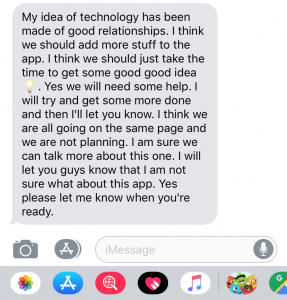
I found this week’s task to be quite challenging and frustrating. The task reminded me of the auto-correct feature available on phones and how auto-correct has caused for some interesting and hilarious conversations between people. At first, I was extremely hesitant to let the predictive text feature take over. I found myself ignoring the predictive text options and typing away my thoughts at the beginning. It took me a couple of tries before I became more comfortable with letting the predictive text take over. Even then, I was not at all satisfied or happy with the way the microblog turned out. I feel like it does not sound like me at all and the words do not echo my thoughts or opinions on the subject. I felt frustrated not being able to correct the grammar or syntax in the microblog and above all, what was most frustrating was the fact that the sentences being generated were not coherent and did not make any sense (as you can read from above). I feel as if I have read statements similar to the ones in my microblog in other blogs and comments made online such as on social media platforms.
This exercise really hit home the idea that although algorithms are cool and are meant to make tasks (such as writing) easier, they do not necessarily do so in an effective way and may end up becoming more problematic than helpful. For someone such as an English Language Learner, predictive text might be a feature that the person might be relieved to have as a tool, however, if they were to rely heavily on this feature, they may be writing content that does not truly reflect their ideas and opinions. If they were to write content for a public blog or writing space, they may even end up writing something that might stir up some controversy or angry comments from their readers. Although predictive text can be a handy tool, it should be used with caution.
Reflecting on the Golden Curation Assignment Groupings
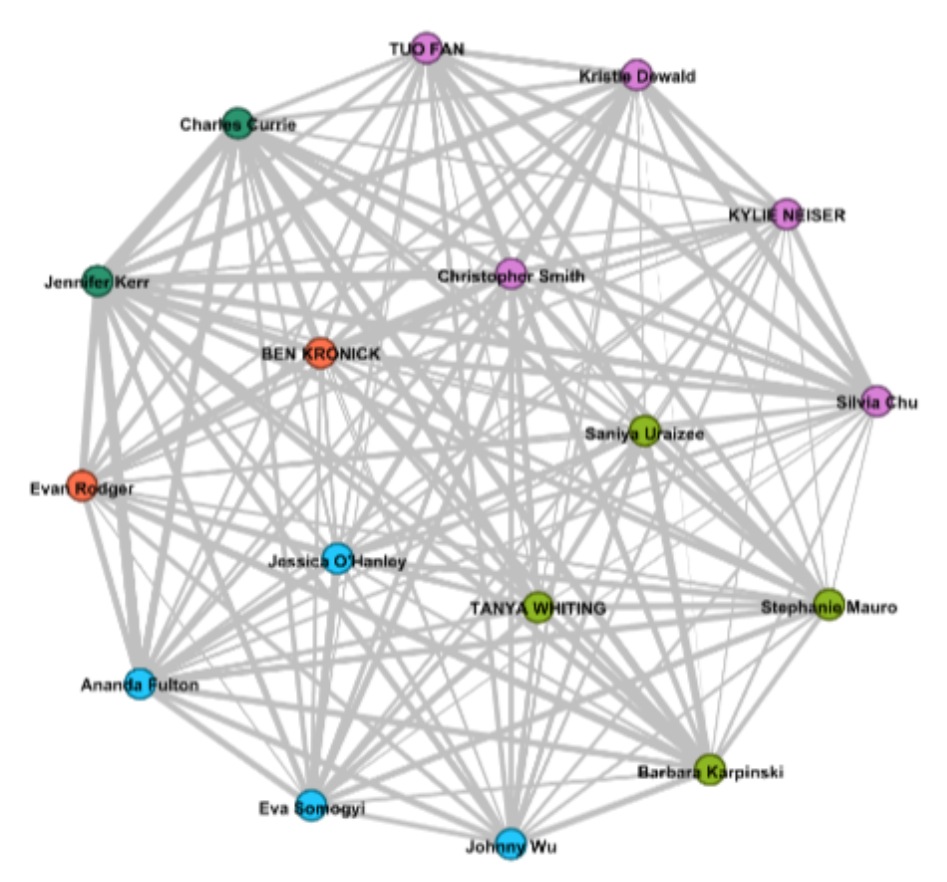

I was both excited and intrigued to see what visuals would be constructed based on the Golden Curation Assignment that we had completed the previous week. I have posted screenshots of the visuals created above.
After looking at the visuals, I realized that the four people in my group that had the most similar choices to mine were Tanya, Stephanie, and Barbara (indicated by the same green colouring of their circles). I was unable to find Barbara’s blog site, however, after looking at Tanya’s and Stephanie’s rationale behind their song choices on their blogs, I could conclude that all of us tried to pick songs to showcase Earth’s cultural diversity. Stephanie and I both tried to pick tracks from each continent on Earth. Tanya and I had about four tracks in common in total, while Stephanie and I had six tracks in common. It was also interesting to note that two people in the entire group – Stephanie and I, were the only ones who chose the Solomon Panpipes track. This leads me to believe that I had the most tracks in common with Stephanie.
Although the visuals show you who you had the most tracks in common with along with the tracks that were picked the most and least (indicated by the size of the red circles in the second visual), the visuals do not show you the similarities in rationale behind choosing the tracks. Just because we have tracks in common with others, does not necessarily mean we had the same reason behind choosing those tracks. For example, although one criteria behind choosing the tracks for Tanya was cultural diversity, she also chose tracks based on themes or genres (she tried to pick tracks that represented beauty, hope, love, and joy and tracks that represented human struggles, sacrifice, and resilience). This cannot be shown in the visuals. Although Stephanie and I had the most tracks in common and we had similar thinking in terms of trying to pick tracks from each continent, the visual does not show why I chose certain tracks over others. I tried to pick tracks that sounded different (for example, if there was a track picked from Europe that was too similar in terms of its sound to one picked from Asia, I would have picked the other track from Europe for the Golden Record). Again, this cannot be depicted or shown in the visual. Keeping the above-mentioned in mind, the visuals do not show me who from among my classmates thought the most like me when completing the Golden Curation Assignment. It would have been extremely cool to see visuals representing like-mindedness in terms of choosing the tracks based on rationale.
Task # 8: Golden Record Curation Assignment
Although I found this week’s task to be very interesting and unique, I also found it quite challenging. It was extremely difficult for me to narrow down the musical contents from 27 tracks to 10. I felt a lot of pressure trying to choose songs that I felt would best represent Earth in terms of its diversity. The tracks I ended up choosing (along with some notes that I jotted down while listening to them) can be found below:
Track # 6: Java, court gamelan, “Kinds of Flowers,” recorded by Robert Brown. 4:43
Track # 8: Zaire, Pygmy girls’ initiation song, recorded by Colin Turnbull. 0:56
Track # 9: Australia, Aborigine songs, “Morning Star” and “Devil Bird,” recorded by Sandra LeBrun Holmes. 1:26
Track # 15: Mozart, The Magic Flute, Queen of the Night aria, no. 14. Edda Moser, soprano. Bavarian State Opera, Munich, Wolfgang Sawallisch, conductor. 2:55
Track # 16: Georgian S.S.R., chorus, “Tchakrulo,” collected by Radio Moscow. 2:18
Track # 18: “Melancholy Blues,” performed by Louis Armstrong and his Hot Seven. 3:05
Track # 23: Bulgaria, “Izlel je Delyo Hagdutin,” sung by Valya Balkanska. 4:59
Track # 26: Solomon Islands, panpipes, collected by the Solomon Islands Broadcasting Service. 1:12
Track # 27: Peru, wedding song, recorded by John Cohen. 0:38
Track # 29: India, raga, “Jaat Kahan Ho,” sung by Surshri Kesar Bai Kerkar. 3:30
Orange text – Instruments ONLY, no voice/singing
Blue text – Combination of voice/singing and music
Green text – Voice ONLY, no instruments
I tried to pick tracks that were extremely diverse in terms of their composition as well as where they originated from. I chose tracks that were voice or singing only, tracks that were music only composed using various instruments, and then lastly, tracks that were a combination of both music and voice/signing. I also chose a mix of tracks that were upbeat and fast and ones that were slow and soft. I felt by providing a diverse range of tracks we could maximize our ability to communicate with Extra-terrestrial life forms. Additionally, I tried to choose tracks that were from different places on Earth composed using a variety of instruments and singing in different languages. I chose tracks from North America, South America, Europe, Asia, Africa, and Australia.
Although they were not included in the assignment’s list, I would have also included Tracks 1-5 in my Golden Record which were: Greetings given in different languages, whale sounds, sounds of Earth and other planets composed mathematically, and the sounds of Pre-historic Earth including the sounds of human life.
Listen to the audio clip below for task # 7. I took our first task and redesigned it to create a narrative from the point of view of my school bag, “Solo”. Enjoy and feel free to leave feedback! 🙂
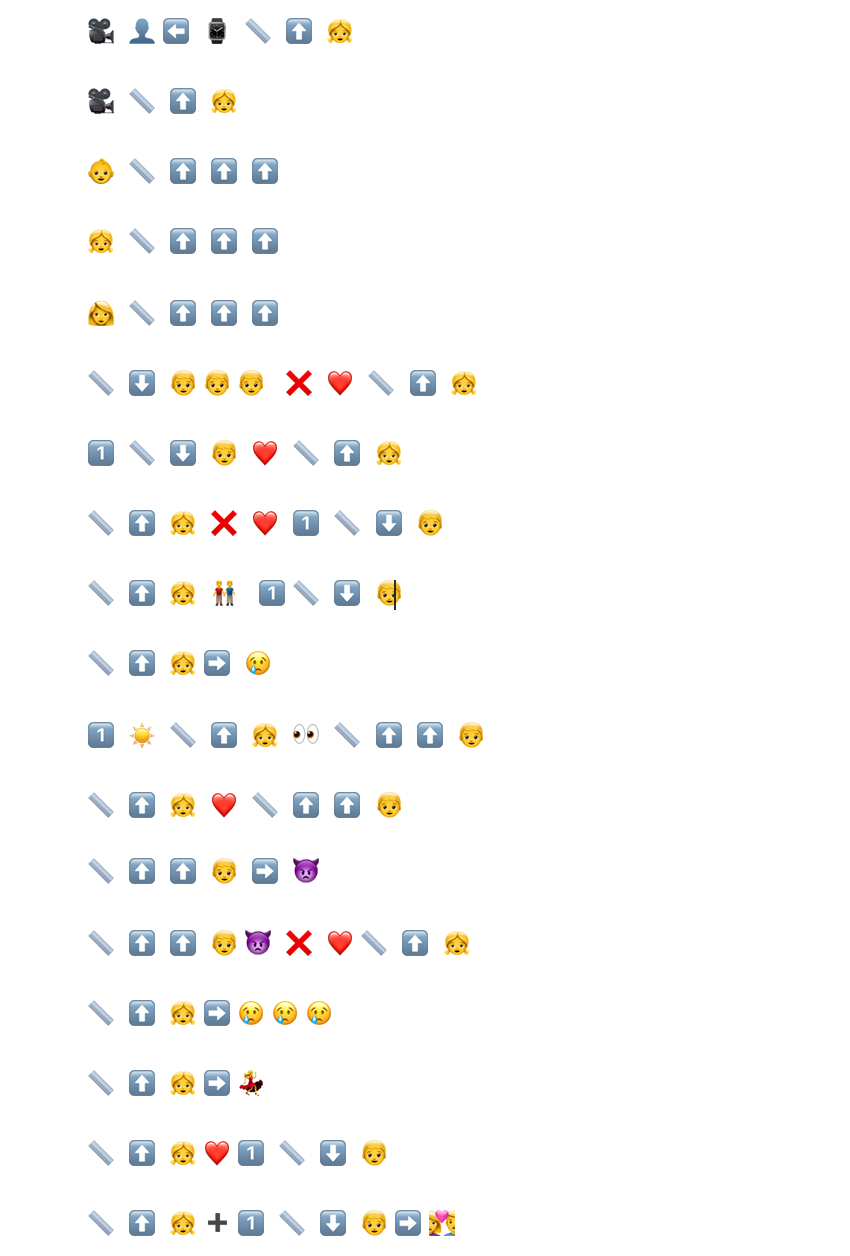
Please click on the link below to access the Twine Task:
I had a great time working on the task for this week! I struggled a little with figuring out how to put in images and gifs, but overall, it was a fun hands-on-learning experience that I believe did a great job of really highlighting the importance of hyper-text. Hope everyone enjoys the story and feel free to leave any feedback! 🙂
Task 4 Diary Entry Images:
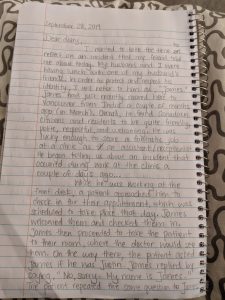
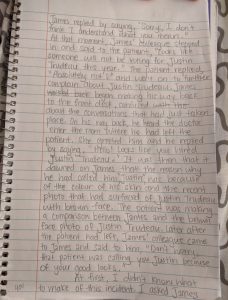
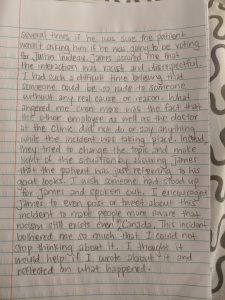
Task 4 Commentary:
I really enjoyed doing the task for this week. It was refreshing and therapeutic for me to write down my thoughts and reflect on a moment in my day. I normally type up my thoughts if I need to but writing manually was a nice change for once. Because I was describing a part of my day and retelling an incident that had taken place, the words came easily and the task was not very difficult to complete. If I was writing a story, I believe it would have taken me a longer time since I would be making the story up as I wrote it down.
It was interesting to note that I automatically chose to write in pencil over pen. I typically always choose pencil over pen when writing longer entries or passages since I know if I make any mistakes I can always erase them. For me personally, writing in pen is a little intimidating due to the fact that if I make a mistake, I cannot get rid of it and thus, pencil is more preferable. Although I wrote my entry in pencil, I refrained from using an eraser in order to “show” the errors and mistakes I made. I wanted to stay true to the writing process. Looking back at my writing, I noticed that any words that I did not want, I had crossed out with a single horizontal line. In order to insert words that I had left out or forgotten, I used a little upside down v and placed the words above that. I also noticed that because I had chosen to write in a notebook, some of the words on the previous page made dents in the paper since I tend to press my pencil into the paper more while writing by hand.
I feel that the most significant different between writing by hand and using mechanized forms of writing such as typing is the alteration or correction process. When writing by hand, in order to alter what you have written, you need to either cross out the words, or use white-out to get rid of them, however, words cannot be rearranged within a paragraph or longer piece of text without the writing and corrections getting messy. What I like about typing out your words on a computer is the fact that you can go back and add in any words or sentences or even paragraphs anywhere in the text you like. You can also delete anything you don’t want and replace that blank space with other words. You have the option of also choosing any font you like and all the letters will be the same. On the contrary, while writing by hand, it is extremely difficult to make all your letters and words look exactly alike. Some parts of your writing may be neat but other parts may be messy or unreadable. Words cannot be “deleted” but have to be crossed out instead. Lastly, inserting paragraphs or longer pieces of writing within a hand-written text is almost impossible unless you draw arrows to indicate where that piece of text is supposed to go, however, too many arrows can also make a piece of text messy to the point that it gets difficult to read.
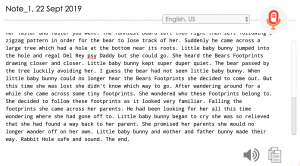
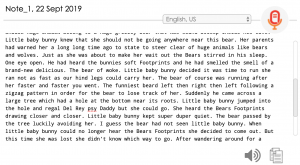

Voice to Text Story:
Once upon a time there used to be a little baby bunny that lived by herself in the forest one day this little bunny decide. Wanted to go on a little Adventure all by herself so without telling her parents she left the rabbit hole and the guide hop down the path deeper and deeper into the woods. After hopping for a while, the baby bunny came across footprints. She began to wonder who these Footprints might belong to. Suddenly she saw. Prince we’re heading is Deering off into a different direction so she decided that she would follow that direction instead of the path leading into the forest. She began following the footsteps for a long time. Suddenly she came across a case. She didn’t know what she should do next. The cave was dark and big she could hear noises coming from it. The little baby bunny began getting scared. At the same time she was also curious and a little hungry she decided she might be able to find some food inside the cave so it was worth taking a look inside. Felicia her way across entering the mouth of the cave. She went further inside to take a peek. Inside she saw a huge Shadow huge Shadow belong to a huge grizzly bear that was sound asleep inside his cave. Little baby bunny knew that she should not be going anywhere near this bear. Her parents had warned her a long long time ago to state to steer clear of huge animals like bears and wolves. Just as she was about to make her wait out the Bears stirred in his sleep. One eye open. He had heard the bunnies soft Footprints and he had smelled the smell of a brand-new delicious. The bear of woke. Little baby bunny decided it was time to run she ran not as fast as our hind legs could carry her. The bear of course was running after her faster and faster you went. The funniest beard left then right then left following a zigzag pattern in order for the bear to lose track of her. Suddenly he came across a large tree which had a hole at the bottom near its roots. Little baby bunny jumped into the hole and regal Del Rey psy Daddy but she could go. She heard the Bears Footprints drawing closer and closer. Little baby bunny kept super duper quiet. The bear passed by the tree luckily avoiding her. I guess the bear had not seen little baby bunny. When little baby bunny could no longer hear the Bears Footprints she decided to come out. But this time she was lost she didn’t know which way to go. After wandering around for a while she came across some tiny footprints. She wondered who these Footprints belong to. She decided to follow these footprints as it looked very familiar. Falling the footprints she came across her parents. He had been looking for her all this time wondering where she had gone off to. Little baby bunny began to cry she was so relieved that she had found a way back to her parent. She promised her parents she would no longer wander off on her own. Little baby bunny and mother and father bunny made their way. Rabbit Hole safe and sound. The end.
Analysis:
I thoroughly enjoyed completing the task for this week and learned a lot from my first experience with a “speech to text” application. For this particular task, I decided to use the website called “Speechnotes” on my laptop. I quickly discovered how difficult this task was. What I struggled with most was coming up with a story impromptu without having it planned out in my head beforehand. I found that I had to pause several times to think about what I was going to say next in the story. I even ended up switching around words but since it was “text-to-speech,” everything I was saying was being recorded.
Throughout the process of recording, I discovered many “mistakes” that were being made. I quickly realized that the text did not include any kind of punctuation unless I specifically said so. For example: I had to specifically say, “period” or “comma” in order for those punctuation marks to appear in the text. For the most part, I tried to say “period” after every sentence, however, I completely missed saying any other punctuation marks. In addition, I realized that some of the words that I said, were not accurately transcribed by the application (there were words that made no sense such as: the application writing case instead of cave). Because the story was made up on the spot, even after re-reading the text, I could not remember or figure out what exactly I had said at the time. All these are considered “mistakes” because they would not be acceptable in written text. Written text needs to follow the rules for proper punctuation and spelling.
If I had the chance to script the story beforehand, I would have taken my time to say the words more slowly and clearly in order to increase the accuracy of the transcribed text. There would be less pauses and fumbling of words since I would be reading out what I had written. I believe the “speech to text” would be more successful and accurate in this case. I found that as I was recording the story impromptu, my pace of speech was very inconsistent and this may have contributed to the multiple “mistakes” that were made in the text.
There are many ways in which oral storytelling differs from written storytelling. The number one way is the absence of punctuation. When you are telling a story verbally, you don’t state out loud the punctuation marks that would be included if the story was being written down. In oral storytelling, your pauses, tone of voice, and volume are used instead as a way to illustrate the effect that punctuation has in a written story. The second way is writing conventions like spelling and capitalization. In oral storytelling spelling and capitalization do not matter, whereas in written storytelling they do. In addition, in oral storytelling, the narrator usually changes their tone of voice to illustrate different characters that are speaking. In written storytelling, quotation marks are used along with the name of the character that said those words. Lastly, oral stories, when retold, are often changed or altered depending on what the person who is telling the story remembers most or what part of the story may have impacted them the most. The storyteller adds in a bit of their own personality when telling the story through the words they choose and the voice tones they use and you are able to get a glimpse of the story from their perspective. In this sense the text is “fluid” or “versatile” and can be moulded however the speaker wants. In written stories, the text is permanently visible on the page and does not change. As you read the story, you are able to recreate it in your head, the way you imagine it and this differs from reader to reader but the facts within the story remain the same.
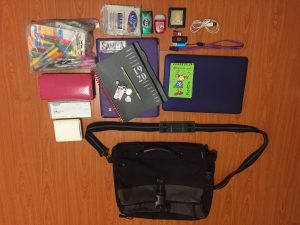
Hello everyone! My name is Saniya Uraizee. I am a full time Grade 5 teacher at an independent school in Surrey, B.C. I have been teaching for about 7 years now. ETEC540 will be my tenth and final course in the MET course! I am looking forward to sharing ideas and learning from all of you in this course as well as completing my Masters degree.
For this task, I chose my teacher bag that I take to school everyday. This bag is extremely important to me and I can’t go to school without it as it carries all the things that I need for a typical day of teaching at school. The following items are displayed in the picture:
In terms of technology, the Macbook Pro as well as USBs and charging wire I believe accurately describe my strong bond with technology. I use my Macbook Pro almost everyday at school along with my USBs that store all the documents and materials that I have created or saved throughout my years of teaching. The charging wire describes the importance of my phone. I keep an extra charger with me in case my battery runs out as I also make use of many apps on my phone such as Class Dojo, Outlook, and the school app for class management, to check parent emails, as well as post reminders and announcements for my students.
There are also several items in my bag that feature text that was printed on them using technology such as the PC optimum mini card attached to my keychain, the chequebook that has my name printed on it, the excel mints, my agenda, the cover of my small green notebook that says, “happy,” the cover on the sanitizer wipes and the sanitizer bottle, the “Sharpie” sign on the package of highlighters, the keychain that has the word, “Maldives,” on it and the engraved heart and apple which has my name on it as well as the saying, “Teachers plant seeds that grow forever.” In addition, my wallet also contains many plastic cards that were created using technology.
The only instances of multilingualism that I could visibly identify from the picture was the French translation provided on the packet of hand sanitizer wipes and the excel mints. My wallet would contain more examples of this on cards as well as the Canadian dollars in cash.
I truly enjoyed doing this exercise as I found that you can learn so much about a person just by looking at what items they choose to keep in their bags. The task helped to highlight my personality as well as what items are important to me. For example, I learned that gifts given by my students are important to me and this was identified from the engraved keychain that was given from one of my former students as well as the pink wallet. The hand sanitizer wipes and bottle also accurately describe me. I am a bit of a “germaphobe” and I have this constant need to wash my hands or sanitize. Lastly, organization is extremely important to me and the items that depict this quality of mine quite well are the agenda, my purple folder, and the ziploc bag containing highlighters, sharpies, and pens (yes, I keep them in a ziploc bag like that so they are not all over the place in my bag).
Lastly, I found this exercise also helped with self-discovery. It was nice for me to see that although I love technology and am constantly exposed to digital text in my daily life, I also enjoy the old-fashioned way of reading and writing text in a book or on paper that was not digitally created and instead was hand written. I’d like to think that in a way this reflects who I am as a person and as a teacher (a blend of old and new methods). I believe balance is important and although due to advancement in technologies, students these days choose typing over writing things by hand, I hope to continue teaching my students (in the present and in the future) about the value of handwriting. It is important to remember that what is considered “old” was once considered “new” and what is “new” will one day become “old.” Who knows what types of technologies will be in store for us in the near future? I’m looking forward to finding out!